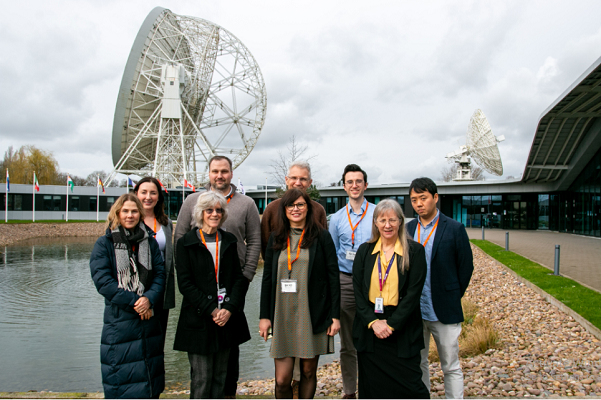[ad_1]

GMV has been awarded a contract to develop the time scales of the two pioneering telescopes of the SKA Observatory (SKAO). The SKAO is an intergovernmental organization with its world headquarters in the United Kingdom, at the historic Jodrell Bank Observatory site near Manchester. SKAO’s mission is to build and operate cutting-edge radio telescopes to transform our understanding of the Universe and provide benefits to society through global collaboration and innovation.
The SKA telescopes will cover two different frequency ranges. SKA-Mid, an array of 197 traditional satellite dishes, is being built in the Karoo region of South Africa, while SKA-Low, an array of 131,072 smaller tree-shaped antennas, is being built in Western Australia, in the Wajarri Yamaji country. For each telescope, the individual dishes and antennas work together as a huge array, and the signals are combined digitally. Both arrays will span large distances, with the most distant antennas separated by 150 kilometers in South Africa and 74 kilometers in Australia.
Using cutting-edge technology, including some of the world’s fastest supercomputers, they will make it possible to study the Universe in exquisite detail, revealing the environments around black holes, tracking the travels of gravitational waves and enabling a host of other ambitious scientific research.
Due to the sheer volume of data that will need to be transported, processed, stored and distributed to end users around the world, the SKA project is considered by many to be the ultimate Big Data challenge. An average of 8 terabits per second of data will be transferred from the telescopes over hundreds of kilometers. This is around 65,000 times faster than the estimated average home broadband speed in 2023.
Because signals from space arrive at each antenna at a slightly different time, the signals must first be aligned. This is achieved thanks to high-precision atomic clocks that mark the arrival time of each signal. Each SKA telescope (SKA-Mid and SKA-Low) operates a central clock system called Timescale. Each time scale is made up of three ultra-stable clocks called hydrogen masers, plus supporting hardware and software.
The signals produced by the masers are continually compared with each other to identify inaccuracies and are also compared and aligned via satellite with UTC time maintained by the International Bureau of Weights and Measures (BIPM).
To support the SKAO mission, under this contract, GMV will design, manufacture, install and commission an operational Timescale for time distribution at the two SKA telescope sites. The project will run from February 2024 to October 2027. GMV will deploy the operational SKA-Mid timescale in South Africa in February 2026 and the SKA-Low timescale in Australia in June 2026. The deployment is followed by a follow-up period and medium.
Ricardo Píriz, Head of the Time and Frequency Division of GMV, United Kingdom, stated: “GMV has been collaborating with the international time metrology community for more than 20 years. We maintain our own atomic time scale, which aligns with UTC to within a few nanoseconds, and is used operationally to monitor the accuracy of time disseminated by GPS and Galileo, among other purposes. The SKA Timescales project represents a turning point for GMV and an excellent opportunity to take our experience in time and frequency generation and distribution to the next level. “We are delighted to be working together with SKAO to deliver an excellent clock system for SKA telescopes.”
Jill Hammond, SKA-Low project manager for synchronization, timing and networking, said: “The SKA timescale is a critical component of the telescope system and our requirements are very demanding. Given the importance of precise time within telescopes, it was essential that we implement, manage, operate and maintain our own time scale; We can’t do that with an “off-the-shelf” solution, so GMV’s schedule is tailored to our unique requirements. We look forward to collaborating with GMV to make this ambitious project a reality and offer a one-of-a-kind solution.”
For more information visit: www.gmv.com

